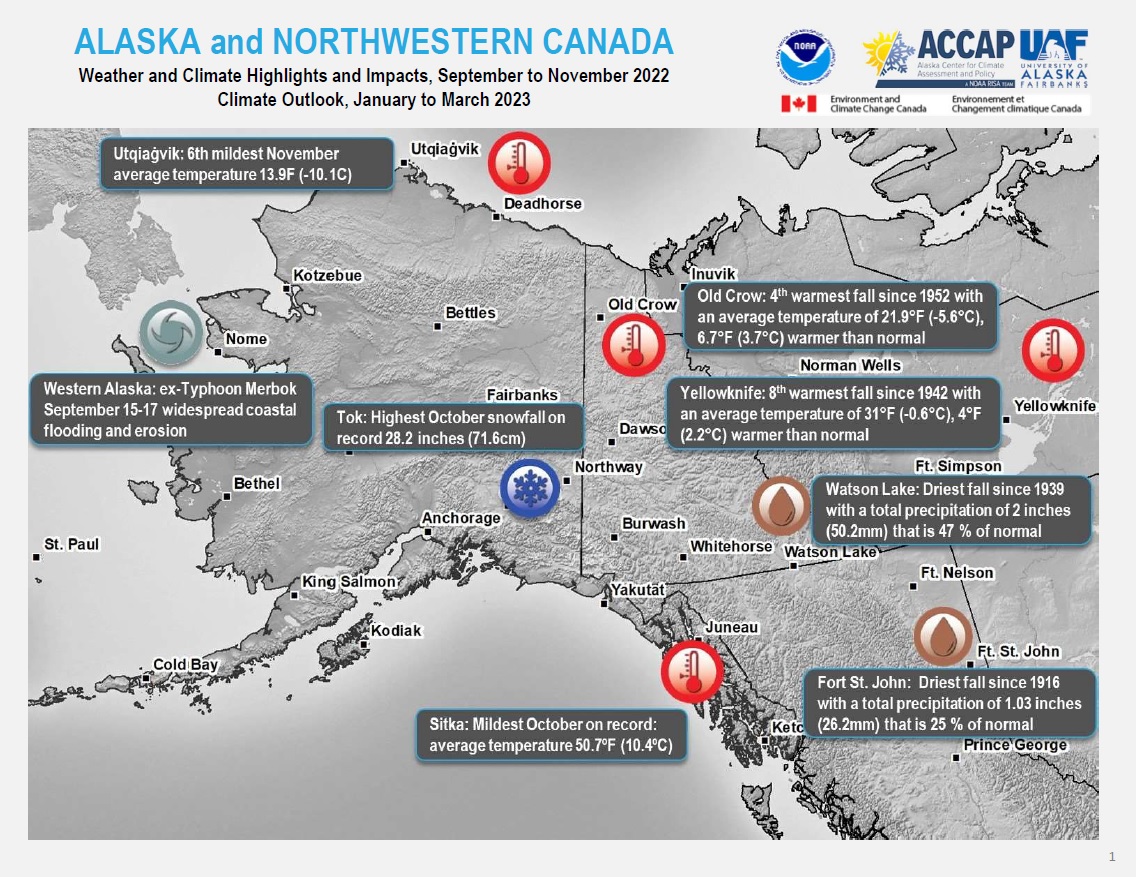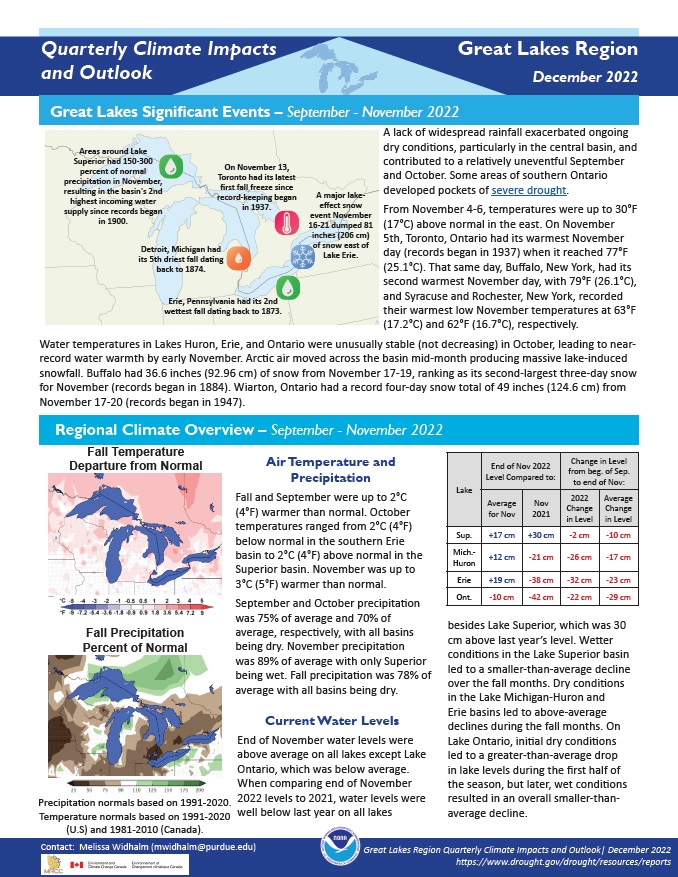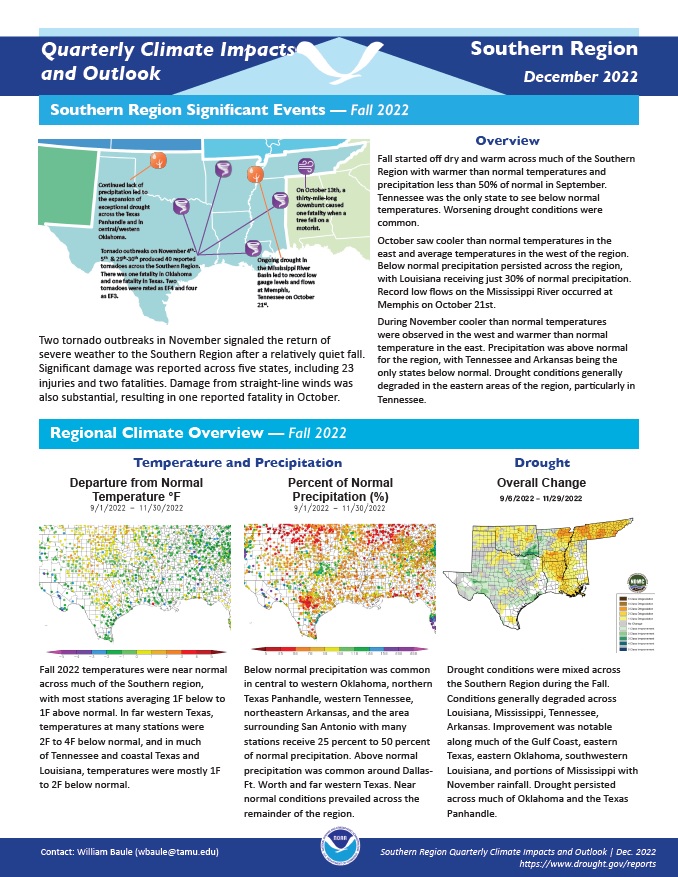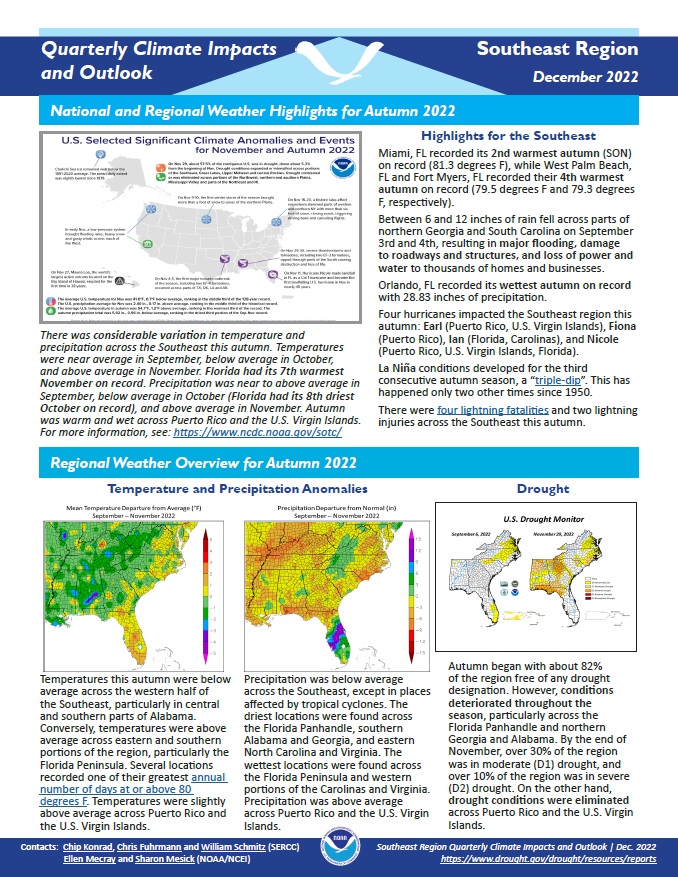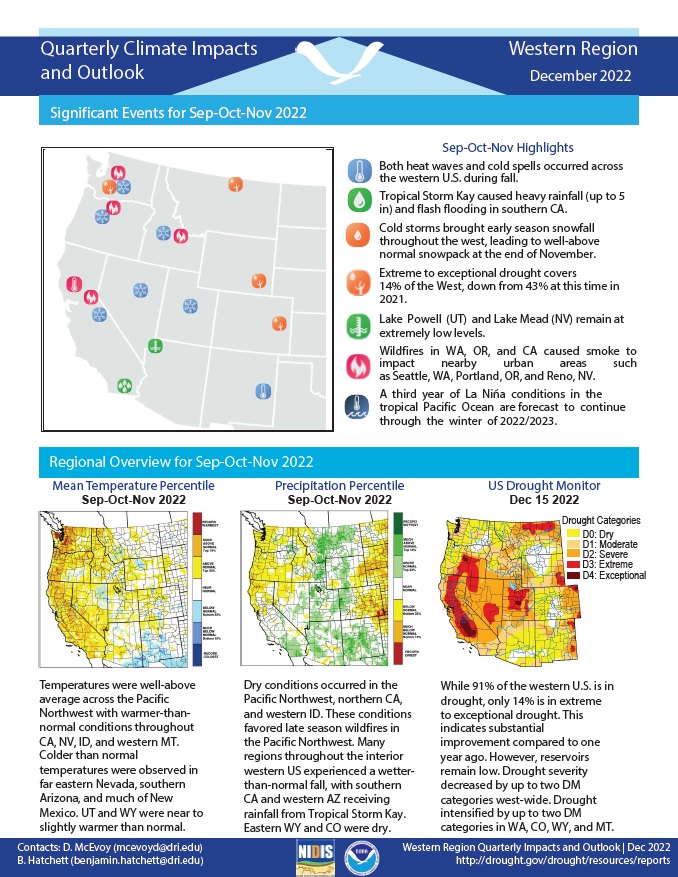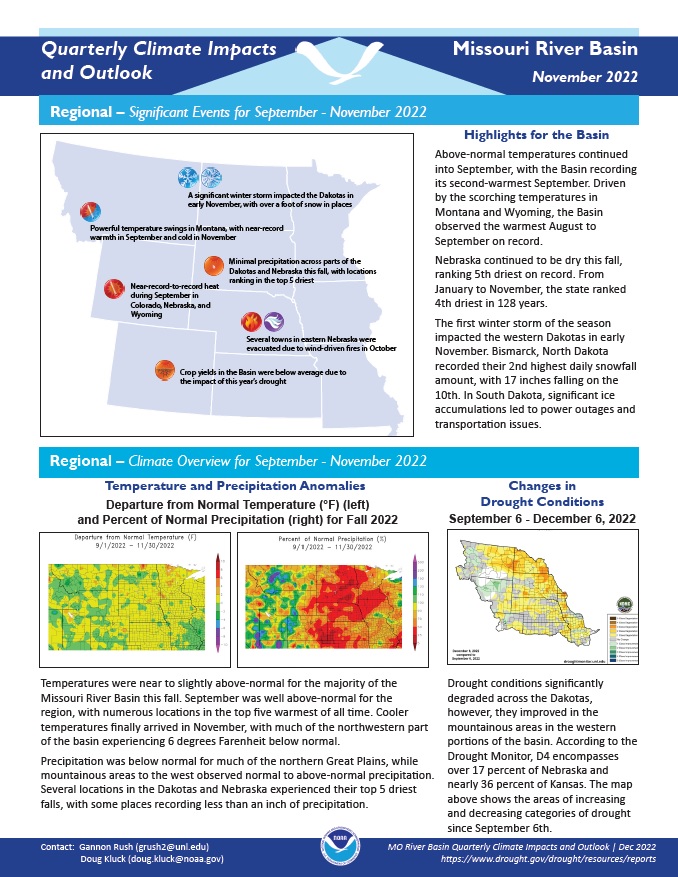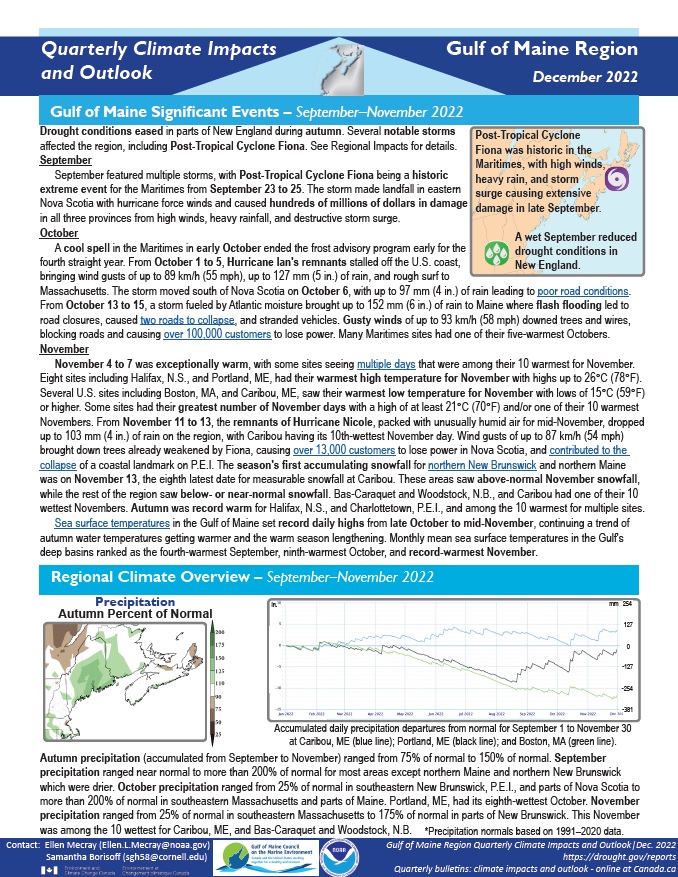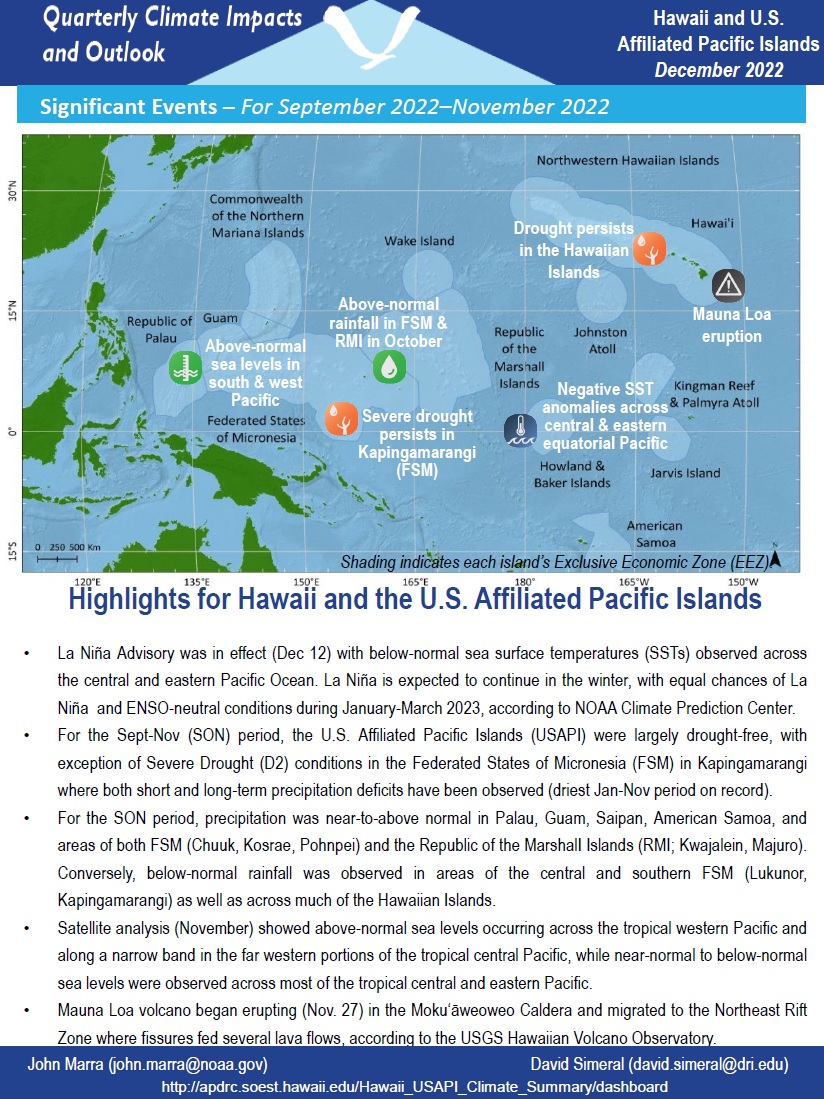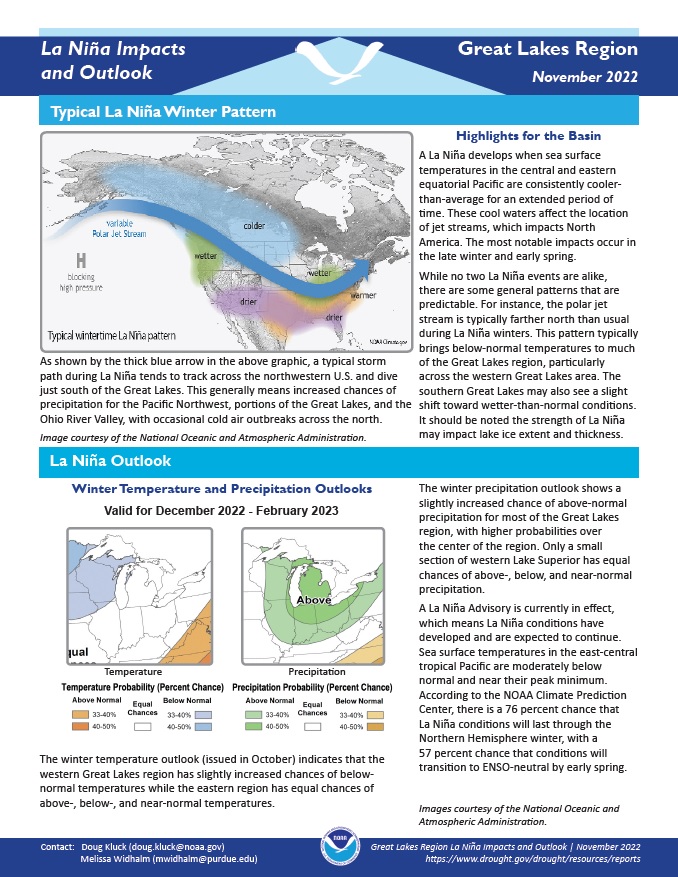For the latest forecasts and critical weather information, visit weather.gov.
Quarterly Climate Impacts and Outlook for Alaska and Northwestern Canada for September–November 2022, with an outlook for January–March 2023. Dated December 2022.
October is the heart of Fall for Southeast Alaska—typically cool and very wet, but October 2022 didn’t feel very fall-like for most areas. In fact, October was the warmest on record for a number of locations and within the top five warmest for many other places.
Quarterly Climate Impacts and Outlook for the Great Lakes Region for September–November 2022. Dated December 2022.
Fall and September were up to 2°C (4°F) warmer than normal. Fall precipitation was 78% of average, and all basins were dry.
NOAA’s Regional Climate Services Program created these climate outlooks to inform the public about recent climate impacts within their respective regions. Each regional report contains easy-to-understand language, and anyone can access them through the Drought Portal.
Quarterly Climate Impacts and Outlook for the Southern Region for September–November 2022. Dated December 2022.
Quarterly Climate Impacts and Outlook for the Southeast Region for September–November 2022. Dated December 2022.
Quarterly Climate Impacts and Outlook for the Midwest Region for September–November 2022. Dated December 2022.
Average fall temperatures were 1–2°F above normal across the upper Midwest, near normal across the central Midwest, and 1–2°F below normal across the lower Midwest. Most of the Midwest had less than 75 percent of normal precipitation for fall, with the south-central Midwest, western Iowa, and southern Minnesota accumulating less than 50 percent of normal.
Quarterly Climate Impacts and Outlook for the Western Region for September–November 2022. Dated December 2022.
Quarterly Climate Impacts and Outlook for the Missouri River Basin for September–November 2022. Dated December 2022.
Temperatures were near to slightly above-normal for the majority of the Missouri River Basin this fall. Precipitation was below normal for much of the northern Great Plains, while mountainous areas to the west observed normal to above-normal precipitation.
Quarterly Climate Impacts and Outlook for the Gulf of Maine Region for September - November 2022. Dated December 2022.
Autumn was up to 3°C (5°F) warmer than normal. Autumn was record warm for two sites and among the 10 warmest for other sites. Autumn precipitation ranged from 75% of normal to 150% of normal.
Quarterly Climate Impacts and Outlook for the Pacific Region for September–November 2022. Dated December 2022.
For the September–November period, precipitation was near-to-above normal in Palau, Guam, Saipan, American Samoa, and areas of both FSM (Chuuk, Kosrae, Pohnpei) and the Republic of the MarshalI Islands (RMI; Kwajalein, Majuro). Conversely, below-normal rainfall was observed in areas of the central and southern FSM (Lukunor, Kapingamarangi) as well as across much of the Hawaiian Islands.
This handout provides information on the typical La Niña winter pattern; the La Niña outlook; potential winter and spring impacts; and comparisons of conditions during previous La Niña years for the Great Lakes region. Updated November 2022.
NOAA’s Regional Climate Services Program created these Outlooks to inform the public about climate impacts within their respective regions. Each regional report contains easy-to-understand language, and anyone can access them through the Drought Portal.


